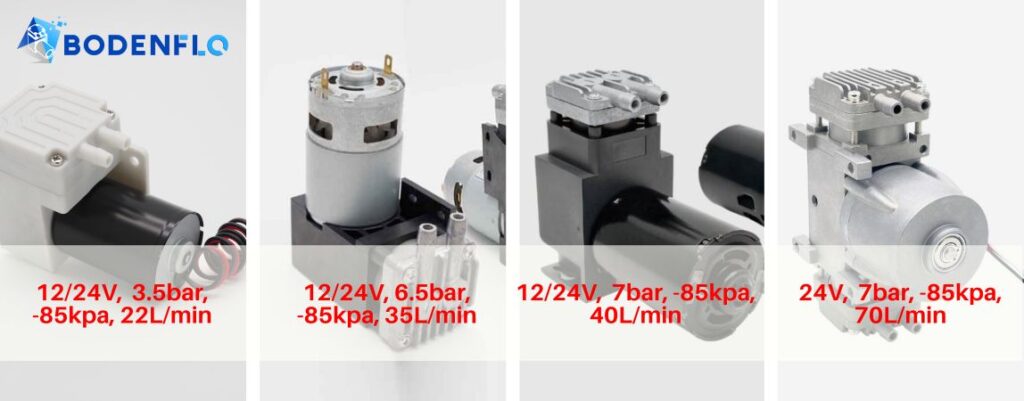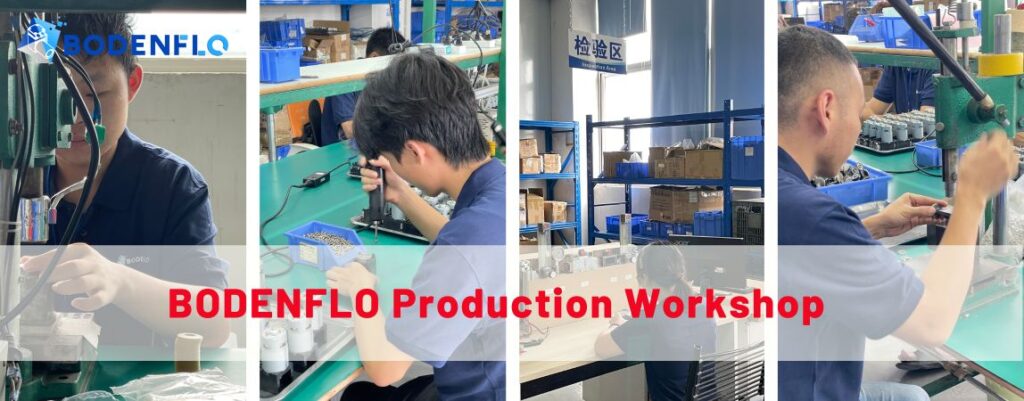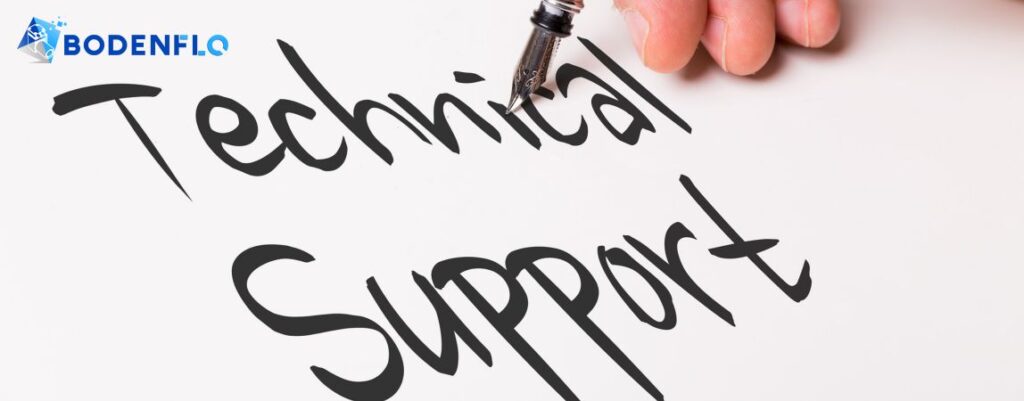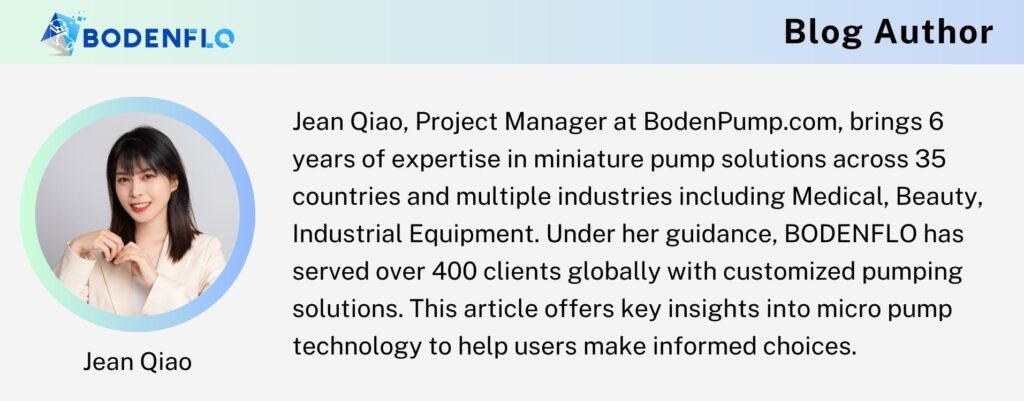
Embark on a comprehensive journey through the world of mini compressors with this ultimate guide. Whether you're a seasoned professional or new to the field, these 100 FAQs cover every aspect you need to know about these vital components, offering insights into their versatility and efficiency across various industries.
Why are mini compressors increasingly crucial in modern technology and industry? These compact, efficient devices are key in applications where space is limited but high performance is required. From small/portable/compact equiment, mini compressors offer the reliability and precision necessary for today's advanced technological demands.
In the following guide, we answer the most frequently asked questions about mini compressors, providing clarity and insight to professionals and enthusiasts alike, ensuring a deep understanding of these vital devices.

General Information FAQs on Mini Compressors
Q1: What exactly is a mini compressor?
A1: A mini compressor is a compact mechanical device that increases the pressure of a gas by reducing its volume. Despite their small size, they are powerful enough to be used in various applications where space is limited and high pressure is required.
Discover more: What Is A Mini Compressor?
Q2: How does a mini compressor work?
A2: A mini compressor works by drawing in air through the inlet valve into the compression chamber, where the air is compressed by the piston or diaphragm driven by a motor. The compressed air is then expelled through the outlet valve for use in various applications.
Q3: What are the different types of mini compressors?
A3: Mini compressors can be categorized by their mechanism of action, such as piston, diaphragm, rotary vane, or rotary screw types. They can also be differentiated by their function, like air compressors, vacuum pumps, and liquid pumps.
Q4: How do mini compressors differ from standard compressors?
A2: Mini compressors are specifically designed for applications that require a smaller footprint and less power consumption, without sacrificing performance. They typically have fewer moving parts, are lighter, and are easier to integrate into portable equipment.
Q5: What are the primary uses of mini compressors?
A3: Mini compressors are used in a wide range of applications, including medical devices, automotive applications, HVAC systems, consumer electronics, pneumatic tools, and many more where compact and reliable air compression is necessary.
Q6: Can mini compressors be used for industrial applications?
A4: Yes, mini compressors can be tailored for various industrial applications, particularly where space is at a premium or for tasks that require mobility and lightweight solutions, such as in mobile pneumatic equipment.
Q7: Are mini compressors suitable for medical devices?
A5: Absolutely. Mini compressors are often used in medical devices due to their reliability, quiet operation, and ability to meet stringent cleanliness and precision standards required in medical applications.
Q8: What advantages do mini compressors offer over larger units?
A6: Mini compressors offer several advantages, including reduced size and weight, lower power consumption, less noise, and the ability to fit into tight spaces. They are also often easier to install and maintain.
Q9: Do mini compressors require a power source?
A7: Yes, mini compressors require a power source. They can be designed to operate on various voltages and can be powered by AC or DC sources, depending on the specific design and intended use.
Q10: Can mini compressors be customized for specific applications?
A9: BODENFLO specializes in offering parametrically customizable mini compressors to meet specific OEM requirements, whether it's for pressure, flow, voltage, or other operational parameters.

Technical Specifications FAQs for Mini Compressors
Q1: What factors determine the power and performance of a mini compressor?
A1: The power and performance are influenced by several factors, including motor efficiency, pump design, and the quality of components. Metrics such as flow rate, pressure, and power consumption are crucial for assessing performance.
Q2: How do I interpret the flow rate and pressure ratings on a mini compressor?
A2: Flow rate, typically measured in liters per minute (L/min), indicates how much air the compressor can move, while pressure, measured in pounds per square inch (PSI) or bar, shows the force it can exert. Higher ratings generally mean more powerful performance.
Q3: What is the significance of a mini compressor's size and weight?
A3: The size and weight impact the compressor's portability and the type of applications it is suited for, especially in space-constrained environments or when the compressor needs to be integrated into portable systems.
Q4: Are noise levels a significant concern with mini compressors?
A4: Yes, noise levels are important, especially in environments such as offices, hospitals, or laboratories. Compressors with lower decibel ratings are preferred in noise-sensitive areas.
Q5: What are common methods to control vibration in mini compressors?
A5: Common methods include using anti-vibration mounts, designing the compressor with balanced components, employing precision machining, and integrating vibration dampening materials within the construction.
Q6: Is the lifespan of a mini compressor affected by its operating cycle?
A6: Yes, the lifespan can be affected by the duty cycle, which is the ratio of time the compressor operates to the time it rests. Continuous operation or heavy-duty cycles can reduce the lifespan if the compressor isn't specifically designed for such use.
Q7: How does ambient temperature affect a mini compressor's performance?
A7: Extreme cold can thicken lubricants and make materials brittle, while extreme heat can lead to overheating. Most compressors are rated for a specific operating temperature range to ensure optimal performance.
Q8: What is the maximum pressure and vacuum that BODENFLO mini compressors can generate?
A6: Our mini compressors are capable of generating a wide range of pressures and vacuum (-30kpa vacuum to 7bar pressure, 0.5~80L/min flow), suitable for various applications, with some models designed for high-pressure output. Please consult product specifications for precise data.

Q9: How are the sizes and weights of mini compressors determined?
A3: The size and weight depend on the compressor's design and the materials used in its construction. BODENFLO mini compressors are engineered to be as lightweight (25g-1000g) and compact as possible without compromising on performance.
Q10: What are the typical dimensions of a mini compressor?
A4: The dimensions vary by model, but BODENFLO offers mini compressors that can range in size from just a few cubic inches to larger units designed for more demanding applications. Exact dimensions for each model are provided in the technical datasheets.
Types and Models of Mini Compressors FAQs
Q1: What are the primary differences between piston, diaphragm, and rotary mini compressors?
A1: Piston compressors use a reciprocating piston to compress air and are known for high pressure and durability. Diaphragm compressors use a membrane to compress air, resulting in oil-free operation ideal for clean environments. Rotary compressors, which include screw and vane types, offer smooth, continuous air output with low vibration.
Q2: How do I choose between different mini compressor models?
A2: The choice depends on your application requirements. Consider factors such as required airflow and pressure, power constraints, operating environment, whether oil-free air is needed, and the desired noise level.
Q3: Are there mini compressors that can provide variable output?
A3: Yes, some mini compressors come with variable speed drives that allow the output to be adjusted according to demand, improving efficiency and extending service life.
Q4: What type of compressor is best for high-precision applications?
A4: For high-precision applications, diaphragm compressors are often preferred due to their oil-free operation and the ability to provide consistent airflow without contamination.
Discover more: Micro Air Compressor: Enhancing Product Efficiency
Q5: What should be considered when comparing models of mini compressors for specific tasks?
A5: When comparing models, consider the compressor's maximum pressure, flow rate, efficiency, size, weight, and any special features like oil-free operation or low noise levels.
Q6: Are there mini compressors designed for use in extreme conditions?
A6: Yes, some compressors are designed with materials and engineering suited for extreme temperatures, dusty environments, or even explosive atmospheres.
Q7: What type of mini compressor is best for portable applications?
A7: Lightweight and compact piston or diaphragm compressors are typically used for portable applications. These are easier to carry and can be designed to run on battery power.
Q8: What types of mini compressors does BODENFLO offer?
A8: BODENFLO offers a variety of mini compressors, including diaphragm, piston, and rotary types, each with different models to suit various industrial, medical, and consumer applications.
Q9: Does BODENFLO offer specialized mini compressors for unique industrial applications?
A9: Yes, BODENFLO caters to niche industrial needs with customizable mini compressors that can be adapted in terms of pressure, flow, voltage, and other specific requirements.
Q10: Can BODENFLO provide model comparisons to help choose the most suitable mini compressor for my needs?
A10: BODENFLO offers comprehensive support in selecting the right mini compressor, including detailed model comparisons, to ensure the best fit for your application's specific needs.

Installation Procedures FAQs for Mini Compressors
Q1: What are the general steps for installing a DC mini compressor?
A1: For a brushed DC mini compressor, connect the positive and negative terminals to your power source according to the voltage requirements. For a brushless DC mini compressor, you will need to refer to the user manual for specific instructions regarding PWM input frequency and other electronic control considerations.
Q2: What should I be aware of when connecting a DC mini compressor to a power source?
A2: Ensure that the power source matches the voltage and current requirements of the compressor. Always connect positive to positive and negative to negative, and ensure that the connections are secure to prevent any electrical faults.
Q3: Are there any specific tools needed for installing a DC mini compressor?
A3: Basic installation typically requires only a few tools such as wire strippers, screwdrivers, and possibly a wrench for securing any mechanical fittings.
Q4: How do I determine the correct voltage and amperage for my DC mini compressor?
A4: The correct voltage and amperage specifications will be listed in the compressor's datasheet or user manual. It's imperative to use a power source that complies with these specifications.
Q5: Can a DC mini compressor be powered by a battery?
A5: Yes, if the battery's output matches the compressor's voltage and current requirements, it can be used as a power source.
Q6: What are the signs of an incorrect installation of a DC mini compressor?
A6: Incorrect installation may manifest as the compressor not starting, overheating, making unusual noises, or electrical components failing. If any of these occur, disconnect the power source and review the installation process.
Q7: How does polarity affect the installation of a brushed DC mini compressor?
A7: Polarity is crucial; reversing the positive and negative connections can damage the compressor or cause it to function improperly. Always double-check the polarity before powering up the compressor.
Q8: Does BODENFLO offer DC mini compressors that are easy to install?
A8: Yes, BODENFLO's range of DC mini compressors is designed for straightforward installation, with clear instructions and customer support to assist with the process.
Q9: What kind of after-sales support does BODENFLO provide for installation issues?
A9: BODENFLO provides comprehensive after-sales support, including troubleshooting assistance for installation issues, to ensure your mini compressor operates correctly from the start.
Q10: How can I ensure that I am installing a BODENFLO DC mini compressor correctly?
A10: By following the detailed instructions provided with your BODENFLO compressor, checking the electrical specifications against your power source, and contacting BODENFLO support if any uncertainties arise during installation.
Integration and Operational Guidelines FAQs for Micro Compressors and Pumps
Q1: What considerations should be taken into account before integrating a micro compressor or pump into a system?
A1: Key considerations include compatibility with the system's voltage and current specifications, the physical space for installation, the capacity to handle the generated airflow or vacuum level, and the operating environment's temperature and humidity ranges.
Q2: How do I control a micro compressor or pump that's embedded within a larger system?
A2: Control is typically managed through the system's main control unit, which should be configured to communicate with the micro device according to the application's requirements.
Q3: What is the process for starting an embedded micro pump or compressor?
A3: The startup process usually involves initiating the system's main power, followed by engaging the specific control sequence for the micro pump or compressor via the system's interface.
Q4: How should an embedded micro pump or compressor be stopped or shut down?
A4: The device should be stopped through the system's control interface, ensuring that any process relying on the pump or compressor is also safely halted to prevent system damage.
Q5: Are there any specific maintenance routines for micro compressors or pumps within a system?
A5: Maintenance routines should focus on checking the integrity of the connections, ensuring clean air or fluid intake, monitoring for any abnormal sounds or vibrations, and adhering to any specific maintenance schedules outlined by the system manufacturer.
Q6: What are the common signs of operational issues with embedded micro pumps or compressors?
A6: Indicators of issues can include unusual noises, decreased performance, overheating, or error messages on the control interface.
Q7: Can micro pumps or compressors be replaced or upgraded individually within a system?
A7: Depending on the system's design, these components may be replaceable or upgradable, but this should be done in consultation with the system manufacturer or a qualified technician to ensure compatibility and safe operation.
Q8: Does BODENFLO offer guidance on integrating their micro pumps or compressors into OEM systems?
A8: BODENFLO provides detailed documentation and customer support for the integration of our micro devices into OEM systems, ensuring optimal compatibility and performance.
Q9: Can BODENFLO customize micro pumps or compressors for specific system requirements?
A9: BODENFLO specializes in custom solutions tailored to the unique needs of clients' systems, including custom fittings, performance characteristics, and control interfaces.
Q10: If a BODENFLO micro pump or compressor fails within a system, how can it be serviced?
A10: BODENFLO offers technical support and servicing options. If a component fails, contact BODENFLO for assistance with troubleshooting, repairs, or replacements as necessary.
Core Mini Compressor and Pump Maintenance and Troubleshooting FAQs
Q1: How do I identify and fix leaks in a system using a mini compressor or pump?
A1: Check all pneumatic connections, especially at junctions, valves, and fittings, for tightness. Apply soapy water to suspect areas; the appearance of bubbles indicates a leak. Tighten or replace faulty components as needed.
Q2: What is the best practice for maintaining the optimal performance of a mini compressor or pump within a device?
A2: Ensure the compressor or pump is clear of debris, the intake filter is clean, and the power supply is consistent with the manufacturer’s specifications. Periodically inspect for physical damage or signs of wear.
Q3: What are common operational issues with mini compressors and pumps in portable devices?
A3: Operational issues often involve inadequate pressure or flow, unexpected noise or vibration, and overheating, which could be due to power supply issues, blocked filters, or mechanical wear.
Q4: How can I prevent overloading the mini compressor or pump in my device?
A4: Operate the device within the recommended duty cycle, avoid exceeding the pressure and flow specifications, and ensure the power supply is stable.
Q5: When should the filters on a mini compressor or pump be replaced?
A5: Filters should be replaced according to the manufacturer's recommendations or if they show signs of damage or clogging, which could impede performance.
Q6: Are there user-serviceable parts on mini compressors and pumps, and how can they be accessed for maintenance?
A6: Accessible parts typically include air filters and external fittings. Refer to the manufacturer’s guide for instructions on how to service these components safely.
Q7: How do you reset a mini compressor or pump after a fault has occurred?
A7: After addressing the fault, such as clearing a blockage or repairing a leak, reset the device according to the manufacturer's instructions. This may include cycling the power or pressing a reset button.
Q8: What specialized maintenance does BODENFLO recommend for its mini compressors and pumps?
A8: BODENFLO advises regular inspection of air filters and monitoring device performance for any deviations from normal operation. We provide specific maintenance schedules and procedures tailored to each model.
Q9: How does BODENFLO assist with troubleshooting their mini compressors and pumps?
A9: BODENFLO offers troubleshooting guides and customer support to address common issues. We can also provide advice on how to check for and resolve issues related to pressure, flow, and power supply.
Q10: In the event of a system failure involving a BODENFLO mini compressor or pump, what steps should be taken?
A10: Contact BODENFLO support for an initial assessment. If the issue is with our component, we will guide you through the repair process, which may involve returning the unit for service or providing in-field servicing options, depending on the warranty and nature of the problem.

Safety and Compliance FAQs for Integrated Oil-Free Mini Compressors and Pumps
Q1: What specific safety considerations apply to oil-free mini compressors and pumps?
A1: Since oil-free compressors and pumps don't require oil for lubrication, there's no risk of oil contamination. However, it's important to ensure they're not overloaded and that the air intake is free from particulate matter that could cause internal wear.
Q2: How does the integrated nature of these components affect their safety and compliance?
A2: Integration within a device means their safety is part of the overall equipment's safety. They must be compliant with the standards that apply to the entire system, and care must be taken not to compromise the device's integrity during maintenance.
Q3: What safety certifications should I look for in a mini compressor or pump?
A1: Look for certifications such as CE, FCC, IEC, C-Tick or RoHS which indicate that the product has been tested and meets the safety standards applicable in your region.
Q4: Are there any specific safety concerns when operating mini compressors and pumps?
A2: Yes, it's important to ensure the device is used within its operational specifications, particularly concerning pressure and electrical requirements, to prevent overloading and potential safety hazards.
Q5: What are the risks of operating a mini compressor or pump without proper ventilation?
A3: Inadequate ventilation can lead to overheating and potentially cause the device to fail, which could result in safety risks or damage to the device.
Q6: How should I dispose of a mini compressor or pump at the end of its service life?
A4: Follow local regulations regarding the disposal of electronic and industrial equipment. Many components may need to be recycled or disposed of as hazardous waste.
Q7: What are the guidelines for safely installing a mini compressor or pump?
A5: Ensure the installation area is clean, dry, and well-ventilated. Follow the manufacturer’s installation instructions, use the proper tools, and wear safety equipment as necessary.
Q8: Does BODENFLO ensure that their mini compressors and pumps meet international safety standards?
A8: Yes, BODENFLO's products are designed and tested to meet international safety standards, and we provide all necessary documentation to demonstrate compliance with these regulations.
Q9: What kind of safety training does BODENFLO provide for the use of its mini compressors and pumps?
A9: BODENFLO offers comprehensive guidelines on the safe operation of our products and can provide training materials or recommendations for proper usage and safety procedures.
Q10: How does BODENFLO support compliance with specific industry regulations for their mini compressors and pumps?
A10: BODENFLO works closely with industry experts to ensure our products are compliant with sector-specific regulations. We can provide detailed information on how our products meet or exceed these standards upon request.

Customization and Accessories FAQs for Mini Compressors and Pumps
Q1: Can mini compressors and pumps be customized to fit specific design requirements?
A1: Yes, mini compressors and pumps can often be customized by manufacturers to meet specific requirements such as size, pressure, flow rate, and power configurations.
Q2: What accessories are commonly available for mini compressors and pumps?
A2: Common accessories include various types of outlet nozzles, mounting brackets, vibration dampers, filters, and hoses designed to enhance functionality or ease of integration.
Q3: How does customization affect the warranty of mini compressors and pumps?
A3: Customization can affect the warranty if it is not done by the original manufacturer or an authorized service provider. Always check with the manufacturer before making custom changes.
Q4: Are there any limitations to how a mini compressor or pump can be customized?
A4: Customization is generally limited by the physical properties of the components, operational capabilities, safety considerations, and regulatory compliances.
Q5: What should be considered when selecting accessories for a mini compressor or pump?
A5: Consider the compatibility with your device, the materials suitable for your operational environment, and whether the accessories meet the necessary performance specifications.
Q6: How do I determine if a custom solution is necessary for my mini compressor or pump application?
A6: If standard models do not meet the specific requirements of your application, such as space constraints, power requirements, or environmental conditions, then a custom solution may be necessary.
Q7: Can I use third-party accessories with my mini compressor or pump?
A7: Third-party accessories can be used if they meet the specifications and do not interfere with the operation or safety of the device. It's advisable to consult with the original manufacturer before using third-party accessories.
Q8: Does BODENFLO offer customization services for their mini compressors and pumps?
A8: BODENFLO provides extensive customization services to ensure that our mini compressors and pumps meet the unique requirements of your applications.
Q9: What type of custom modifications can BODENFLO provide for their products?
A9: BODENFLO can modify products in terms of size, pressure output, flow rates, and electrical connections, among other specifications. Contact us with your requirements for more detailed information.
Q10: How can I order custom accessories or request a modification for a BODENFLO mini compressor or pump?
A10: To order custom accessories or request modifications, contact BODENFLO directly with your specifications and requirements. Our team will work with you to develop the right solution for your application.
Purchasing Information FAQs for Mini Compressors and Pumps
Q1: What should I consider before purchasing a mini compressor or pump?
A1: Evaluate the specific requirements of your application, including pressure, flow rate, size constraints, power supply, and environmental factors. Also, consider the reliability and reputation of the manufacturer.
Q2: How can I find the right mini compressor or pump for my needs?
A2: Research different models and manufacturers, compare the specifications to your requirements, and don’t hesitate to contact manufacturers directly for expert advice.
Q3: What accessories are commonly available for mini compressors and pumps?
A2: Common accessories include various types of outlet nozzles, mounting brackets, vibration dampers, filters, and hoses designed to enhance functionality or ease of integration.
Q4: Can I purchase a mini compressor or pump directly from the manufacturer?
A4: Many manufacturers allow direct purchases, while others operate through a network of distributors. Check the manufacturer’s website or contact them for purchasing options.
Q5: What is the average lead time for a mini compressor or pump order?
A5: Lead times vary depending on the manufacturer, model, and customization required. Standard models typically have shorter lead times, while custom orders may take longer.
Q6: What kind of after-sales support is provided with the purchase of a mini compressor or pump?
A6: After-sales support can include technical support, warranty service, and parts replacement. Always verify the scope of support when making a purchase.
Q7: How do I handle warranty claims for a mini compressor or pump?
A7: Contact the manufacturer or supplier from whom you purchased the device. Have your purchase information and warranty details on hand to facilitate the process.
Q8: Does BODENFLO offer customization services for their mini compressors and pumps?
A8: BODENFLO provides extensive customization services to ensure that our mini compressors and pumps meet the unique requirements of your applications.
Q9: What type of custom modifications can BODENFLO provide for their products?
A9: BODENFLO can modify products in terms of size, pressure output, flow rates, and electrical connections, among other specifications. Contact us with your requirements for more detailed information.
Q10: How can I order custom accessories or request a modification for a BODENFLO mini compressor or pump?
A10: To order custom accessories or request modifications, contact BODENFLO directly with your specifications and requirements. Our team will work with you to develop the right solution for your application.
Shipping and Support FAQs for Mini Compressors and Pumps
Q1: What shipping options are typically available for mini compressors and pumps?
A1: Common shipping options include ground shipping, air freight, and express courier services. The choice depends on the urgency, size, and weight of the order, as well as the destination.
Q2: How are shipping costs for mini compressors and pumps calculated?
A2: Shipping costs are usually based on the package's weight, dimensions, destination, and the type of shipping service selected. Some suppliers may offer flat rates or free shipping for certain orders.
Q3: Can I track my order once it has been shipped?
A3: Most suppliers provide a tracking number that allows you to monitor the shipment's progress through the carrier’s website or customer service.
Q4: What should I do if my order arrives damaged?
A4: Report the damage to the carrier and the supplier immediately. Take photos of the damage for documentation, and retain all packaging materials for inspection.
Q5: Are there any international shipping restrictions for mini compressors and pumps?
A5: Shipping restrictions can vary depending on the country. It's important to check with the supplier and verify any import regulations or restrictions in your country.
Q6: How long does it typically take to receive an order once it's placed?
A6: Delivery times vary depending on the manufacturer's stock, production schedule, and the shipping distance. Standard deliveries can range from a few days to several weeks.
Q7: What kind of customer support is available after receiving a mini compressor or pump?
A7: Suppliers typically offer customer support for technical questions, troubleshooting, warranty claims, and assistance with any operational issues.
Q8: Does BODENFLO offer international shipping for their mini compressors and pumps?
A8: Yes, BODENFLO provides international shipping options. We work with various carriers to offer reliable shipping solutions to our global customers.
Q9: How does BODENFLO handle customer support inquiries for their products?
A9: BODENFLO offers comprehensive customer support through email, phone, and online channels. Our team is available to assist with product inquiries, troubleshooting, and after-sales service.
Q10: What is BODENFLO's policy on returns and exchanges for mini compressors and pumps?
A10: BODENFLO has a clear return and exchange policy which typically covers defects in materials and workmanship. For specific terms and conditions, customers should refer to the policy outlined at the time of purchase.

Conclusion
This guide serves as an invaluable resource, providing a well-rounded understanding of mini compressors. By covering a spectrum of FAQs, we aim to empower professionals with the knowledge needed to navigate the complexities of these essential devices, ensuring informed decisions and efficient usage.
BODENFLO, renowned for its high-flow mini compressors and pumps, offers over a hundred standard options to choose from. Additionally, we specialize in custom development services and system solutions to meet your specific needs.


